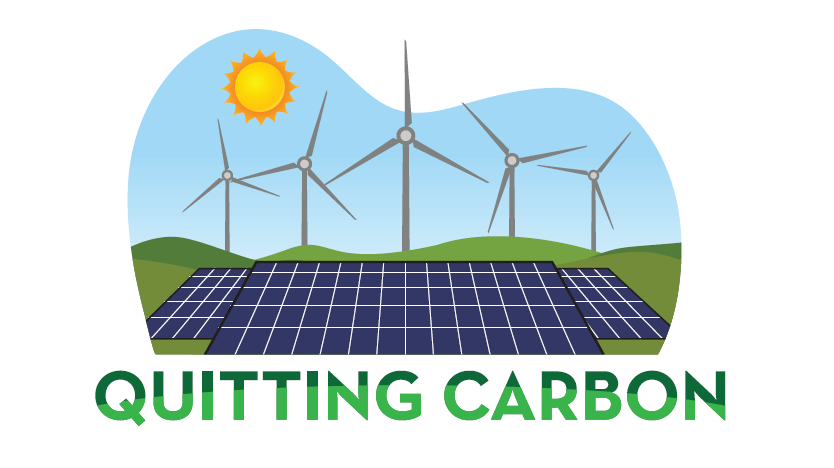What I’m reading: Gas stoves increase cancer risk, California new construction going all-electric, balcony solar coming to the U.S., and more

Quitting Carbon is a 100% subscriber-funded publication. To support my work, please consider becoming a paid subscriber or making a one-time donation.
Ahead of the long Memorial Day weekend, here is another roundup of highlights from what I've been reading. Thanks, as ever, for reading and subscribing.
Gas stoves increase cancer risk
New research reinforces why I am so determined to replace all the fossil gas-burning appliances in my home.
“Gas stoves increase the chances of getting cancer, with nearly double the risk for kids than for adults. That’s the stark top-line finding of a recent study by a team of researchers from Stanford University; University of California, Berkeley; and other organizations,” Alison Takemura reported for Canary Media last week.
She added: “The study builds on prior work by the group that found that gas stoves emit benzene, a potent carcinogen also found in secondhand cigarette smoke – even when the cooking appliances are turned off.”
“The only way to eliminate the exposure is to replace a gas or propane stove with a non-emitting induction or other electric stove,” Rob Jackson, senior author of the study and Earth systems professor at Stanford, told Takemura.
That’s just what I plan to do in my home. After installing an air-source heat pump and heat pump water heater 18 months ago, just one gas-burning appliance remains – the cooktop in the kitchen – which I’m soon replacing with an electric induction model.
Look for more on my journey to an all-electric home in the coming weeks.
California new construction going all-electric
Removing gas-burning appliances from my California home has required time, investment, and persistence. But in California, developers of new buildings are increasingly opting to go all-electric from the start.
At an electrification summit held recently in Sacramento, California Energy Commission Chair David Hochschild noted that more than 80% of new construction in the state is all-electric.
“Eighty-one percent of residential line extension requests by builders to PG&E [Pacific Gas and Electric] and SDG&E [San Diego Gas and Electric] were electric-only, with 75 percent of commercial line extension requests also electric-only. Together, 80 percent of residential, commercial, and mixed-use building line extension requests by builders to PG&E and SDG&E were electric-only,” the energy commission’s media team wrote in a April 15 blog post.
UK may require solar car parks
In my last roundup, I mentioned that the UK’s Labour government would soon release rules requiring solar to be installed atop new homes. It may do the same for car parks, too, according to The Times’ Adam Vaughan.
“Solar panels could be mandated on top of new car parks across England, Wales and Northern Ireland under plans being considered by ministers,” he writes. France already adopted rules requiring small car parks to install solar panels by July 2026 and two years later for large car parks.
“Officials are also exploring whether electric vehicle drivers could benefit from cheaper charging rates at car parks fitted with solar power. The government is primarily looking at new car parks but is mulling over whether to extend the proposal to existing ones as well,” writes Vaughan.
Balcony solar coming to the U.S.?
So-called “balcony solar,” typically small one- or two-panel photovoltaic systems that can be installed and plugged in on an apartment balcony, is a fast-growing phenomenon in Europe.
In Germany, more than 700,000 balcony solar power plants, with a combined capacity of 600 megawatts, had been installed as of October 2024, according to Clean Energy Wire. In April of that year, Germany’s electricity grid regulator simplified processes enabling tenants and homeowners to register and install new balcony solar power plants up to 800 watts. A quarter of Germans say they already have or plan to install one of the systems on their balcony or in a garden, according to a survey published earlier this month.
Will balcony solar take off U.S.? Perhaps.
In Utah, Governor Spencer Cox (R) signed legislation (HB 340) on March 25 that permits “small portable solar generation devices” with a capacity of 1.2 kilowatts or smaller to plug directly into a standard 120-volt wall socket, without an interconnection application, provided all hardware complies with electrical certification standards.
And in California, Bright Saver, a San Francisco-based non-profit, began installations of its small, plug-in solar systems for early adopters in the greater San Francisco Bay Area last month, reported PV Magazine’s John Fitzgerald Weaver.
“By framing their system as an appliance rather than a construction project, the nonprofit has successfully worked with cities such as Berkeley and San Mateo to bypass permitting requirements,” writes Weaver. “If you can place it like a TV or washing machine and just plug it in, most cities agree it doesn't need a permit,” Bright Saver co-founder Rupert Mayer told him.

Have China’s emissions peaked?
When will China’s greenhouse gas emissions peak? And how quickly can the government force emissions down from there? We may have an answer to the first question.
“For the first time, the growth in China’s clean power generation has caused the nation’s carbon dioxide (CO2) emissions to fall despite rapid power demand growth,” Lauri Myllyvirta, lead analyst at the Centre for Research on Energy and Clean Air, writes in an analysis published for Carbon Brief last week.
“China’s emissions were down 1.6% year-on-year in the first quarter of 2025 and by 1% in the latest 12 months. Electricity supply from new wind, solar and nuclear capacity was enough to cut coal-power output even as demand surged, whereas previous falls were due to weak growth,” he writes. “The analysis, based on official figures and commercial data, shows that China’s CO2 emissions have now been stable, or falling, for more than a year.”
But Myllyvirta adds an important caveat: China’s emissions “remain only 1% below the latest peak, implying that any short-term jump could cause China’s CO2 emissions to rise to a new record.”
So, some good news, but let’s watch to see if the trend holds through 2025 and beyond.
Electric mobility rolls on
Despite persistent, ill-informed reporting to the contrary, the transition to electric vehicles is building momentum across the globe.
The new edition of the International Energy Agency’s (IEA) annual Global EV Outlook finds that EVs’ share of the global car market exceeded 20% for the first time in 2024.
“And in the first three months of 2025, electric car sales were up 35% year-on-year. All major markets, and many others, saw new records for first-quarter sales,” according to the IEA.
“Despite significant uncertainties, electric cars’ market share is on course to exceed 40% by 2030 as they become increasingly affordable in more markets.”
EVs’ increasing affordability makes it easier to justify making the switch even in industrial settings such as ports.
Global terminal operator SSA Marine recently converted its entire fleet of forklifts at a berth at the Port of Los Angeles from propane to electric models – “making it the company’s first terminal to run 100% zero-emissions cargo handling equipment,” Electrek’s Michelle Lewis reported earlier this month.
Also, at the Port of Los Angeles, Torrance, California-based startup Arc Boat Company plans to retrofit a 26-foot-long tugboat with lithium-ion battery packs and a 600-horsepower drivetrain, the Los Angeles Times’ Caroline Petrow-Cohen reported last week.
The vessel will be the first zero-emission tug to support operations at the Port of Los Angeles, Arc told Petrow-Cohen.
Bonus 1: A matchmaking service for USAID’s life-saving work
The wanton destruction of the U.S. Agency for International Development (USAID) by DOGE minions acting in Donald Trump’s name stains the American conscience. But in the wake of so much needless pain and misery – we may never know how many people will die because USAID’s vital overseas work was interrupted – good-hearted Americans have stepped forward to try to limit the damage.
Caitlin Tulloch is one of them. Formerly an economist at USAID, she was let go and reinstated multiple times by the agency during the DOGE-led tumult before ultimately resigning.
“It was around that time that she and several colleagues, some of whom had been laid off, went on to create a special kind of matchmaking service,” NPR’s Ari Daniel reported earlier this month.
“They call themselves Project Resource Optimization (PRO). The idea was simple – out of the ashes of the dismantling of much of U.S. foreign assistance, Tulloch and her team would guide philanthropists who want to help but are uncertain how to do so. They would offer advice on where to invest their money for the biggest impact,” writes Daniel.
If Donald Trump and Elon Musk exemplify America at its worst, Caitlin Tulloch and her PRO collaborators represent America at its best.
Bonus 2: Teaching an endangered ibis to migrate
More inspiration. The New Yorker’s Nick Paumgarten recently embedded with a group of mostly Austrian and German scientists and volunteers, led by pilot Johannes Fritz, that is working to save the endangered northern bald ibis. Each year, the team teaches a flock of juveniles how to migrate 1,700 miles from Germany to the ibis’ wintering grounds on the southern coast of Spain.
Here’s how Paumgarten beautifully set the scene:
“Our devastation of nature is so deep and vast that to reverse its effects, on any front, often entails efforts that are so painstaking and quixotic as to border on the ridiculous. Condor or cod, grassland or glacier: we do what we can, but the holes in the dyke outnumber the available thumbs. Fritz’s microlight brings to mind Noah’s ark, except that it has room for only one niche victim of our age of extinction. The commitment, ingenuity, and sacrifice required to try to save just this one species demonstrate how dire the situation has become, and yet the undertaking also reflects a stubborn hope that’s every bit as human as the tendency to destroy. Fervor in the face of futility: what other choice do we have? That’s the idea behind Fritz’s northern-bald-ibis project, anyway. This is what it takes, so let’s get to it.”
Bonus 3: A tribute to Tony Gwynn
I am a lifelong San Diego Padres fan. And Mr. Padre, Tony Gwynn, will always be my favorite baseball player. Had his life not been cut short by cancer, Gwynn would have turned 65 this month.
To mark Gwynn’s birthday, The Athletic’s Tyler Kepner published a moving tribute to and remembrance of the Hall of Famer. Gwynn was unfailingly generous and humble. I remember him patiently signing every baseball or notebook for the young fans – including my brother and I – who lined up for his autograph before or after games at the Padres' Spring Training complex in Arizona.
But there was nothing modest about his accomplishments on – and off – the field, writes Kepner:
“Gwynn won eight batting titles in 20 seasons while collecting 3,141 hits. He could have gone 0-for-1,000 after he retired and still hit .305 – higher than the hit king, Pete Rose. Gwynn’s .338 career average is the best of anyone who spent his entire career in the integrated major leagues. Wade Boggs and Rod Carew are tied for second, 10 points behind the master. Gwynn hit .397 (50-for-126) off Greg Maddux and Pedro Martínez, with no strikeouts. John Smoltz fanned him once while giving up a .462 average (30-for-65). Gwynn owned almost everybody: forkballers (Hideo Nomo, .560), knuckleballers (Tom Candiotti, .422), Cy Young Award winners (Doug Drabek, .469), World Series MVPs (Curt Schilling, .390), Leiter brothers (Al and Mark, .452) – on and on and on. The best of Gwynn, on the field and off, was about as special as anything we’ve ever seen.”




